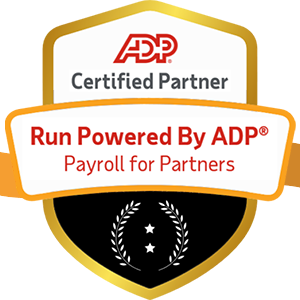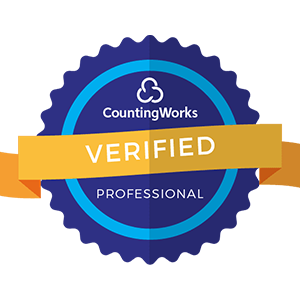What if you could understand how your employees really feel—before they quit? Natural Language Processing is giving companies unprecedented insight into workplace sentiment, but this powerful tool requires careful, ethical implementation.
The Silent Crisis in Modern Workplaces

Your employees are telling you everything you need to know. In their emails. Their Slack messages. Their survey responses. Their casual conversations during virtual meetings.
The problem? Most organizations aren't listening—at least not effectively.
By the time the annual engagement survey results come in, three of your top performers have already accepted offers elsewhere. By the time you conduct exit interviews, it's too late to address the underlying issues. By the time patterns become obvious to leadership, the damage is done.
The opportunity: Natural Language Processing (NLP) technology can analyze employee communications at scale, identifying sentiment patterns, emerging concerns, and cultural trends in real-time. When implemented ethically and transparently, NLP can help organizations become more responsive, supportive, and aligned with employee needs.
The challenge: This same technology, if misused, can create a surveillance culture that destroys the trust it aims to build.
Let's explore how NLP is transforming employee sentiment analysis—and how to harness its power responsibly.
Understanding Natural Language Processing
What Is NLP?
Natural Language Processing is a branch of artificial intelligence that enables computers to understand, interpret, and generate human language. It combines linguistics, computer science, and machine learning to process and analyze text and speech data.
Core Capabilities:
- Sentiment analysis: Determining positive, negative, or neutral tone
- Emotion detection: Identifying specific emotions (joy, frustration, anxiety, excitement)
- Topic modeling: Discovering themes and patterns in large text collections
- Entity recognition: Identifying key people, places, concepts mentioned
- Language understanding: Grasping context, intent, and meaning beyond literal words
How NLP Processes Employee Feedback
The NLP Pipeline:
- Data Collection
- Employee surveys and feedback forms
- Internal communication platforms (email, chat, collaboration tools)
- Performance reviews and 1-on-1 notes
- Exit and stay interviews
- Social media mentions (public only)
- Text Processing
- Cleaning and normalizing text data
- Breaking text into analyzable components
- Identifying key words and phrases
- Removing noise and irrelevant information
- Analysis
- Sentiment scoring (positive, negative, neutral)
- Emotion classification (happy, frustrated, concerned, etc.)
- Topic extraction and categorization
- Trend identification over time
- Pattern recognition across departments or demographics
- Insight Generation
- Aggregated sentiment scores and trends
- Key themes and concerns identification
- Anomaly detection (sudden sentiment shifts)
- Predictive analytics (attrition risk, engagement forecasts)
- Action Recommendations
- Prioritized areas for intervention
- Suggested initiatives based on feedback patterns
- Department or team-specific insights
- Individual support flags (when appropriate)
Why Employee Sentiment Analysis Matters Now
The Business Case for Understanding Sentiment
Engagement Drives Performance
- Companies with highly engaged workforces outperform peers by 147% in earnings per share (Gallup)
- Engaged employees are 87% less likely to leave their organizations
- Teams with high engagement show 21% greater profitability
Turnover Is Expensive
- Replacing an employee costs 1.5-2x their annual salary
- Average time to productivity for new hires: 6-12 months
- Lost institutional knowledge: immeasurable
- Impact on remaining team morale: significant
Early Warning Systems Are Valuable
- 79% of employees who quit showed signs of disengagement beforehand
- 52% of voluntarily exiting employees say their manager could have prevented their departure
- Most turnover is preventable with early intervention
The Limitation of Traditional Approaches
Annual Surveys:
- Data is outdated by the time it's analyzed
- Once-yearly snapshot misses emerging issues
- Low response rates limit usefulness
- Generic questions miss specific concerns
Exit Interviews:
- Too late to retain the employee
- Often not fully candid
- Reactive rather than proactive
- Miss employees who quit quietly
Manager Observations:
- Subject to individual bias
- Limited visibility across organization
- Inconsistent across teams
- Rely on employees proactively raising concerns
Quarterly Pulse Surveys:
- Still periodic rather than continuous
- Survey fatigue reduces participation
- Limited depth of insight
- Time-consuming to analyze manually
How NLP Transforms Employee Sentiment Analysis
1. Real-Time Continuous Monitoring
From Periodic Snapshots to Living Data
Traditional Approach:
- Annual survey → analyze for 2 months → present findings → plan initiatives → 6 months later, implement
- Total time from sentiment to action: 8-10 months
NLP-Powered Approach:
- Continuous analysis → weekly insights → immediate interventions
- Time from sentiment to action: days or weeks
Real-World Application:
Scenario: Engineering Team Burnout
What NLP Detects:
- Week 1: Slight increase in negative sentiment in engineering team communications
- Week 2: Specific themes emerge: "deadline," "overtime," "understaffed"
- Week 3: Sentiment continues declining, frustration language intensifies
- Week 4: Alert triggered for management review
Intervention:
- HR and engineering leadership review findings
- Immediate team discussion scheduled
- Short-term: redistribute work, bring in contractor support
- Long-term: hiring plan adjustment, better project scoping
Outcome:
- Issue addressed before anyone quits
- Team feels heard and supported
- Burnout prevented rather than managed after the fact
2. Identifying Emotional Nuances
Beyond Simple Positive/Negative
Traditional Sentiment Analysis:
- Positive (😊)
- Neutral (😐)
- Negative (☹️)
Advanced NLP Emotion Detection:
- Joy, excitement, pride, satisfaction
- Frustration, disappointment, concern, anxiety
- Anger, resentment, bitterness
- Confusion, uncertainty, helplessness
- Boredom, disengagement, apathy
Why Nuance Matters:
Example 1: Two "Negative" Sentiments
Employee A: "I'm frustrated with this project because the requirements keep changing."
- Emotion: Frustration
- Cause: Process issue
- Solution: Better project management and stakeholder alignment
Employee B: "I'm angry that my contributions aren't recognized while others get promoted."
- Emotion: Anger + resentment
- Cause: Recognition and advancement
- Solution: Review promotion criteria, ensure fair recognition practices
Same negative sentiment score, completely different root causes and solutions.
3. Uncovering Hidden Insights and Patterns
What Manual Analysis Misses
Pattern Recognition Across Data:
Example Discovery 1: The Remote Work Divide NLP analysis across 5,000 employees reveals:
- Remote employees: 15% higher positive sentiment about work-life balance
- Remote employees: 23% higher negative sentiment about career advancement
- Pattern: Remote workers feel excluded from informal networking and visibility
Insight: Create specific career development programs for remote workers and ensure equitable promotion practices.
Example Discovery 2: The Manager Effect NLP analysis of team communications shows:
- Teams with Manager A: Consistently high positive sentiment, collaborative language
- Teams with Manager B: Declining sentiment over past 6 months, formal language
- Pattern: Manager B's teams losing psychological safety
Insight: Manager coaching intervention needed before talent starts leaving.
Example Discovery 3: The Onboarding Cliff Analyzing new hire sentiment over time reveals:
- Weeks 1-4: High enthusiasm and positive sentiment
- Weeks 5-8: Sharp decline in sentiment, increase in confusion-related language
- Pattern: Onboarding program ends too soon, leaving new hires unsupported
Insight: Extend structured onboarding to 90 days with clear milestones and check-ins.
Identifying Unsung Heroes
NLP can surface employees who:
- Consistently receive positive mentions from colleagues
- Demonstrate collaborative language patterns
- Help resolve others' concerns
- May not be visible to leadership through traditional channels
This helps ensure high-performers are recognized and retained.
4. Facilitating Open, Anonymous Feedback
Creating Psychological Safety
The Feedback Paradox:
- Organizations need honest feedback to improve
- Employees fear repercussions for honest feedback
- Result: Feedback is sanitized and less useful
How NLP Helps:
Anonymous Aggregation:
- Individual feedback analyzed in aggregate
- Patterns identified without attributing to individuals
- Trends reported at team/department level
- Privacy preserved while insights emerge
NLP-Powered Feedback Channels:
- Anonymous chatbots: Employees share concerns conversationally
- Sentiment analysis of voluntary communications: Only analyzing messages employees choose to share
- Open-ended survey analysis: Processing narrative responses at scale
- Feedback platforms: Anonymous submission with NLP processing
Best Practices:
- Make aggregation thresholds clear (e.g., "insights only reported for groups of 10+")
- Never use NLP for individual performance evaluation
- Transparent about what's analyzed and how
- Opt-in systems where appropriate
5. Enhancing Targeted Engagement Strategies
From Generic Programs to Personalized Interventions
Data-Driven Engagement:
Traditional Approach:
- Implement company-wide wellness program
- Hope it addresses employee needs
- Measure participation
- Wonder why engagement doesn't improve
NLP-Informed Approach:
- Analyze sentiment to identify actual concerns
- Discover Engineering team stressed about workload, not wellness
- Implement targeted solutions: better project scoping, additional resources
- Measure sentiment improvement in specific area
- Actual problem solved
Personalization at Scale:
Department-Specific Insights:
- Sales team concerned about quota attainability
- Product team frustrated with tooling limitations
- Customer success worried about understaffing
- Finance happy with current processes
Action: Different initiatives for different teams based on their actual needs.
Lifecycle-Based Understanding:
- New hires (0-6 months): Focus on onboarding experience
- Established employees (6 months-3 years): Career development and growth
- Tenured employees (3+ years): Innovation opportunities and recognition
- At-risk employees: Proactive retention conversations
Critical Considerations: Ethics and Privacy
The Surveillance Culture Risk
The Danger: NLP's power to analyze employee communications can easily cross the line from supportive insight to invasive surveillance.
Red Flags of Misuse:
- Monitoring individual employee communications without consent
- Using sentiment analysis for performance evaluations
- Tracking employees' personal/private communications
- Creating detailed profiles of individual employees
- Using insights to discipline or fire employees
- Lack of transparency about what's monitored
The Result: Destroyed trust, decreased candor, hostile work environment, potential legal issues.
Ethical NLP Implementation Framework
- Transparency and Consent
Mandatory Practices:
- Clear disclosure: Employees know what's monitored and how it's used
- Opt-in options: Especially for communications analysis
- Purpose explanation: Why NLP is being used and how it benefits employees
- Limitations clearly stated: What NLP will NOT be used for
Example Policy Statement: "We use NLP technology to analyze aggregated, anonymized employee feedback from surveys and optional communication channels. This analysis helps us identify organizational trends and concerns so we can improve the workplace. NLP is NEVER used for individual performance evaluation or disciplinary actions. Your privacy is protected through [specific measures]."
- Aggregation and Anonymization
Privacy Protection:
- Minimum group sizes: Only report insights for groups of 10+ employees
- No individual identification: Insights at team/department level only
- Data de-identification: Remove identifying information before analysis
- Secure data handling: Encryption and access controls
- Purpose Limitation
Acceptable Uses:
- Identifying organizational concerns and trends
- Improving workplace policies and culture
- Understanding engagement drivers
- Early intervention for team-level issues
- Product/tool effectiveness (e.g., internal systems)
Unacceptable Uses:
- Individual performance evaluation
- Disciplinary decisions
- Identifying "problem employees"
- Invasive personal monitoring
- Political or union activity tracking
- Human Oversight
Required Elements:
- HR professionals interpret NLP insights, not just algorithms
- Context provided for all findings
- Employee feedback mechanisms for concerns about NLP use
- Regular audits of NLP system use and outcomes
- Ethics committee reviewing NLP practices
- Data Governance
Essential Policies:
- Clear data retention limits
- Secure data storage and access controls
- Regular data deletion
- Audit trails for data access
- Compliance with privacy regulations (GDPR, CCPA, etc.)
Implementation Roadmap
Phase 1: Planning and Preparation (Months 1-2)
Define Objectives and Scope
Key Questions:
- What specific problems are we trying to solve?
- What employee communications will we analyze?
- How will we ensure privacy and build trust?
- What resources do we need?
Stakeholder Alignment:
- Executive sponsorship and commitment
- HR leadership ownership
- IT/Security involvement for data governance
- Legal review of privacy and compliance
- Employee representative input (if applicable)
Policy Development:
- Clear NLP use policy
- Privacy protection measures
- Ethical guidelines
- Transparency commitments
Phase 2: Technology Selection (Months 2-3)
Evaluating NLP Solutions
Key Criteria:
- Accuracy: How well does it understand context and nuance?
- Privacy features: What anonymization and security measures exist?
- Integration: Does it work with your existing systems?
- Customization: Can you train it on your organization's language?
- Compliance: Does it meet regulatory requirements?
- Transparency: Can you explain how it works to employees?
Leading Solutions:
- Qualtrics XM: Comprehensive experience management with NLP
- Culture Amp: Employee engagement platform with sentiment analysis
- Peakon (Workday): Real-time employee feedback and analytics
- Glint (Microsoft/LinkedIn): Engagement surveys with text analytics
- Leena AI: HR chatbot with sentiment analysis
- Custom solutions: Built on platforms like AWS, Google Cloud, or Azure
Phase 3: Pilot Program (Months 4-6)
Testing with Limited Scope
Pilot Parameters:
- Select 1-2 departments or teams (100-500 employees)
- Clearly defined scope and objectives
- Specific metrics for success
- Regular feedback from participants
Pilot Activities:
- Launch with comprehensive communication
- Provide multiple feedback channels
- Monitor adoption and usage
- Gather qualitative feedback
- Measure sentiment improvement
- Identify technical or process issues
Pilot Evaluation:
- Did employees feel comfortable with NLP use?
- Were insights actionable and valuable?
- Did we protect privacy effectively?
- What improvements are needed?
Phase 4: Scaling and Integration (Months 7-12)
Organization-Wide Rollout
Communication Strategy:
- Company-wide announcement with leadership endorsement
- Detailed FAQ addressing privacy concerns
- Training for managers on interpreting insights
- Regular updates on how insights are being used
Integration with HR Processes:
- Regular reporting cadence to leadership
- Integration with engagement initiatives
- Connection to action planning processes
- Feedback loop showing responsiveness
Ongoing Management:
- Quarterly review of NLP effectiveness
- Annual employee surveys about NLP use and trust
- Regular audits of privacy compliance
- Continuous refinement based on feedback
Measuring Success
Key Performance Indicators
Trust and Adoption:
- Employee awareness of NLP use: Target 90%+
- Trust in privacy protection: Target 75%+
- Participation in NLP-enabled feedback: Target 70%+
- Positive perception of NLP use: Target 65%+
Insight Quality:
- Actionable insights generated per month
- Accuracy of trend prediction
- Speed from insight to intervention
- Manager satisfaction with insights
Business Impact:
- Employee engagement scores improvement
- Turnover reduction (especially regrettable departures)
- Time to address employee concerns
- Manager effectiveness improvements
- Cost savings from retention improvements
Cultural Impact:
- Increased feedback submission
- Greater employee voice in decision-making
- Faster organizational responsiveness
- Improved employee experience scores
Real-World Success Stories
Case Study 1: Global Tech Company
The Challenge: 15,000-person organization experiencing 22% annual turnover, struggling to understand why high performers were leaving.
NLP Implementation:
- Analyzed exit interview transcripts and anonymous survey data
- Implemented quarterly pulse surveys with NLP analysis
- Created anonymous feedback chatbot
Key Insights Uncovered:
- Career development concerns varied significantly by tenure and level
- Remote employees felt excluded from advancement opportunities
- Middle managers lacked coaching skills to support team development
- Compensation wasn't primary concern—growth and recognition were
Actions Taken:
- Developed tenure-specific career development programs
- Created remote employee advancement task force
- Implemented manager coaching program focused on development conversations
- Enhanced recognition programs
Results:
- Turnover decreased to 15% within 18 months
- Engagement scores increased by 23%
- Early warning system identified and retained 47 at-risk high performers
- Manager effectiveness scores improved by 31%
Case Study 2: Healthcare Organization
The Challenge: High burnout rates among clinical staff, engagement declining despite wellness initiatives.
NLP Implementation:
- Analyzed staff meeting notes, shift handover communications, and survey responses
- Implemented NLP-powered anonymous feedback system
- Weekly sentiment tracking by department and shift
Key Insights:
- Burnout driven by administrative burden, not clinical workload
- Night shift staff felt disconnected from leadership and decision-making
- Specific process inefficiencies causing frustration
- Wellness programs missing mark—staff wanted process improvements, not yoga classes
Actions Taken:
- Streamlined documentation requirements (reduced by 30%)
- Created night shift leadership representation
- Fixed specific process bottlenecks identified in feedback
- Shifted wellness budget to process improvement initiatives
Results:
- Burnout indicators decreased by 41%
- Retention improved by 18%
- Patient satisfaction scores increased (happier staff = better care)
- ROI of 3.5x from reduced turnover costs alone
Case Study 3: Financial Services Firm
The Challenge: Diversity and inclusion concerns, underrepresented groups reporting lower engagement.
NLP Implementation:
- Analyzed feedback by demographic groups (aggregated, anonymized)
- Identified specific language patterns and themes
- Tracked sentiment trends over time by group
Key Insights:
- Microaggression patterns in certain departments
- Lack of visible career pathways for underrepresented groups
- Exclusion from informal networking opportunities
- Different concerns across different underrepresented groups
Actions Taken:
- Targeted inclusion training for identified departments
- Created visible career pathway examples and mentorship
- Formalized networking and sponsorship programs
- Department-specific interventions based on specific concerns
Results:
- Engagement gap between groups reduced by 67%
- Promotion rates for underrepresented groups improved to match peers
- Attrition of underrepresented talent decreased by 52%
- Reputation as inclusive employer improved
The Future of NLP in Employee Sentiment Analysis

Emerging Technologies and Trends
- Multimodal Sentiment Analysis
Beyond Text:
- Voice analysis (tone, pitch, energy in recordings)
- Video analysis (facial expressions, body language in presentations/meetings)
- Biometric data (stress indicators from wearables, if consented)
Privacy Challenge: Even more invasive potential—requires even stronger ethical frameworks.
- Predictive Analytics
Anticipating Issues:
- Attrition risk models predicting likely departures months in advance
- Burnout detection before it becomes severe
- Team conflict identification before it escalates
- Engagement decline early warning systems
- Personalized Employee Experiences
Individual Adaptation:
- Communication style adaptation based on preferences
- Personalized learning recommendations
- Customized benefit suggestions
- Individual career pathing support
Ethics Note: Personalization requires individual-level data—must be fully transparent and opt-in.
- Integration with Other HR Technologies
Comprehensive Employee Insights:
- Performance management data
- Learning and development activity
- Compensation and benefits data
- Workplace collaboration patterns
Holistic Understanding: Complete picture of employee experience, but requires robust privacy protection.
- Real-Time Intervention Systems
Automated Support:
- Chatbots providing immediate resources based on detected concerns
- Automated escalation to appropriate support (HR, EAP, manager)
- Just-in-time learning content delivery
- Proactive check-ins when sentiment declines
Best Practices Summary
For Organizations Implementing NLP
- Start with Trust
- Transparency from day one about NLP use
- Clear communication about privacy protections
- Demonstrate responsiveness to feedback
- Build credibility through ethical implementation
- Focus on Aggregates, Not Individuals
- Team and department-level insights only
- Minimum group size thresholds
- Never use for individual performance evaluation
- Protect employee privacy rigorously
- Combine Quantitative and Qualitative
- NLP insights plus human interpretation
- Follow up with focus groups or interviews
- Don't let algorithms replace human judgment
- Context matters enormously
- Take Action on Insights
- Insights without action destroy credibility
- Close the feedback loop visibly
- Show employees their voices lead to change
- Celebrate improvements driven by feedback
- Evolve Ethically
- Regular ethics reviews of NLP use
- Employee input on acceptable use
- Stay current on privacy regulations
- Err on side of privacy protection
For Employees
- Understand Your Rights
- Know what's being monitored and how
- Understand privacy protections in place
- Know how insights are used
- Ask questions if unclear
- Provide Feedback
- Participate in NLP-enabled feedback systems
- Be honest while maintaining professionalism
- Share concerns about NLP use if you have them
- Help shape how technology is used
- Hold Organization Accountable
- Expect transparency about NLP use
- Demand privacy protection
- Question uses that feel invasive
- Provide input on ethical guidelines
Conclusion: Power Requires Responsibility
Natural Language Processing offers unprecedented ability to understand employee sentiment at scale. When implemented ethically and transparently, it can help organizations become more responsive, supportive, and aligned with employee needs—creating workplaces where people genuinely thrive.
The potential benefits are significant:
- Earlier identification of concerns before they escalate
- Deeper understanding of employee experience
- More targeted and effective interventions
- Stronger feedback culture and organizational responsiveness
- Better retention and engagement outcomes
But this power comes with profound responsibility.
The same technology that can help organizations listen better can also be misused for surveillance, control, and invasion of privacy. The difference lies entirely in how organizations choose to implement and govern these tools.
The Key Principles:
- Transparency wins trust — Be open about what you're doing and why
- Aggregation protects privacy — Focus on patterns, not individuals
- Action completes the loop — Insights without response are worthless
- Ethics aren't optional — Privacy and dignity come first
- Humans remain essential — Technology augments, doesn't replace, human judgment
The choice is yours: Use NLP to genuinely understand and support your employees, or use it to monitor and control. One builds the engaged, productive workplaces of the future. The other destroys trust and drives away the talent you're trying to retain.
Choose wisely. Implement thoughtfully. Lead ethically.
The future of work demands both innovation and integrity. NLP for employee sentiment analysis can embody both—if we commit to using its power responsibly.





